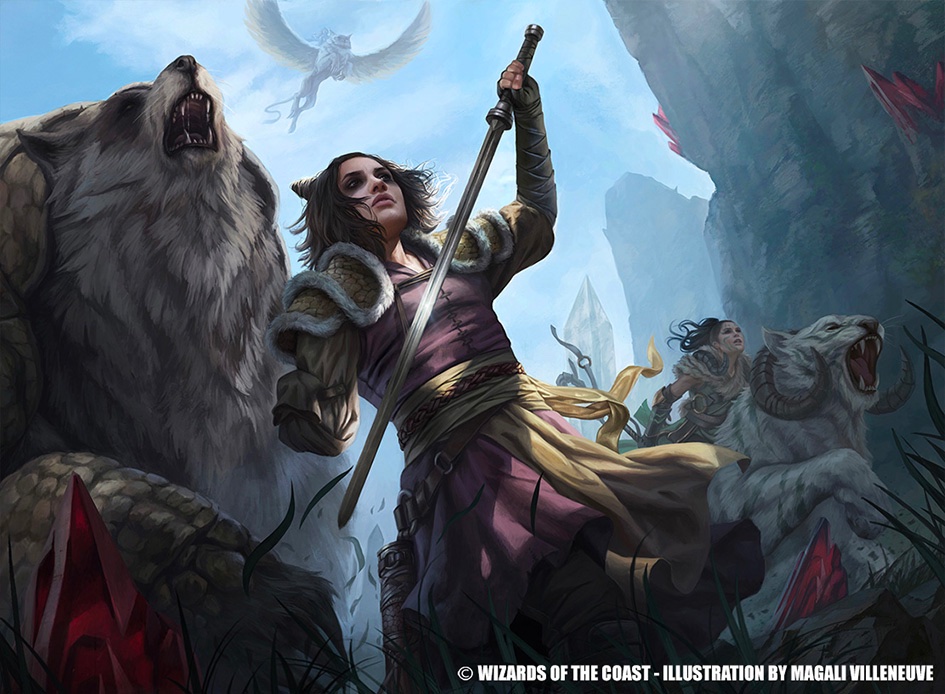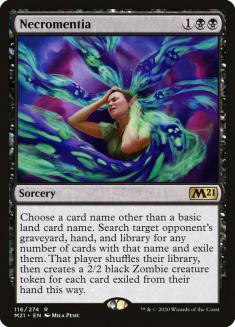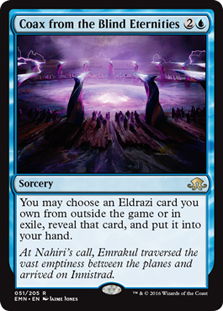Welcome to What We’d Play! With the unbanning of Oath of Nissa, many are unsure what they’d play in Pioneer. That’s where we come in and let you know what we’d play and why we’d play it. Hopefully this advice aids in your decision making over the next handful of days! Be sure to vote for what deck you would play at the end!
Shaheen Soorani — Dimir Inverter
Creatures (8)
Planeswalkers (3)
Lands (24)
Spells (25)

Management has dropped the ball on this format. Pioneer has great potential, showcasing the most powerful cards printed in the last few years. Nearly every control staple that paved the way for my recent career is legal, as well as the spells that have caused me the most angst in those years of success. That dynamic is a good sign for format health, where the aggro, midrange, control, and combo players are all equally happy. Each competitor can play a deck that is best suited to them, except one piece of the puzzle is missing.
For some reason, Inverter of Truth did not suffer any bans in the last announcement. This is where management went wrong, missing an easy opportunity to open of the format for each of the archetypes in a meaningful way. As it now stands, playing anything outside of Dimir Inverter is a gamble and I do not plan to take it. With the power of Eliminate, Dimir Inverter is everything a control deck wants to be early on, with one of the cleanest late-game combo wins on the back of Dig Through Time. There are other decks that do well in Pioneer, but there is only one king in the Pioneer castle.
Dom Harvey — Naya Winota
Creatures (34)
- 4 Llanowar Elves
- 4 Voice of Resurgence
- 4 Elvish Mystic
- 2 Pia and Kiran Nalaar
- 4 Angrath's Marauders
- 4 Legion Warboss
- 4 Tithe Taker
- 4 Winota, Joiner of Forces
- 4 Garruk's Harbinger
Lands (22)
Spells (4)

I hoped and expected to be writing about a very different Pioneer format today. Instead, we are back to the old question about Dimir Inverter — try to convince yourself you can beat them, or join them. With that in mind, I stand by my previous recommendation of Golgari Aggro, but Naya Winota has sparked my interest again after its Top 4 finish in the recent Pioneer Showcase on Magic Online.
Previous lists were too committed to resolving Turn 2 Goblin Rabblemaster or Legion Warboss, but my enthusiasm for Garruk’s Harbinger as a three-drop carries over here — not just another way to find Winota but a resilient threat against the decks most able to interact with it. Tithe Taker offers another two-drop that Eldritch Evolution can turn into Winota, Joiner of Forces at a profit while making it harder to remove Winota on the critical turn and giving it more hits.
My version is modeled after a list by Kelvin Chew, who showed that sideboarding into a midrange deck is feasible and sensible. I added Tomik, Distinguished Advokist as an Eldritch Evolution target against Lotus Breach that can also be found with Winota (additional dedicated hate may be needed if Lotus Breach remains popular and racing it reliably proves too hard).
You still need a good reason not to play Dimir Inverter. If your reason is that the format is stale and your interest in it waned long ago, a deck like this — powerful and exciting but surprisingly consistent — may be just the ticket.
Ben Friedman — Dimir Inverter
Creatures (7)
Planeswalkers (6)
Lands (24)
Spells (23)

The maindeck is the same as always. I’ve tried Search for Azcanta; I’ve tried maindeck Jace, Vryn’s Prodigy; and I’ve tried Censor. Collective Brutality is a compromise card that works about as well against the mirror and Lotus Breach as it does against Mono-Black Aggro and Azorius Spirits.
The new stuff is in the sideboard. When the mirror match and Lotus Breach are the most popular decks out there, and no one is playing any Coax of the Blind Eternities of their own (relying instead on the poorly-positioned Ashiok, Nightmare Muse to do…something), it’s time to play Necromentia. You could play Infinite Obliteration to tag specifically Inverter of Truth and/or Fae of Wishes, but the second Necromentia usually puts them away (taking Jace, Wielder of Mysteries against Dimir Inverter) and it hits Lotus Field against Lotus Breach.
Mono-Black Aggro sideboards in Necromentia to give it a fighting chance against these two decks, so you should too! As a bonus, what do you think happens when all your opponents sideboard in their three Mystical Disputes only to get slammed with a Necromentia on Turn 3? They look foolish, that’s what. Sideboarding is a game to make your opponent look foolish.
Now, why Coax from the Blind Eternities? Well, to make Mono-Black Aggro look foolish, of course! With Dig Through Time in your deck, you will eventually find the Coax no matter what. They’ll hit you with a Necromentia for your Inverters. You’ll pitch three, and then show them the Coax from the Blind Eternities hanging out in your deck for later. Keep pace, grind it out, and eventually win at your leisure many turns down the line.
You know how you’re not winning against Mono-Black Aggro? Ashiok! Ashiok is too vulnerable to those Murderous Riders Mono-Black always seems to have rolled up. Oh, and now they play Demonic Embrace, so you’re going to get your planeswalker smacked out of nowhere regardless.
Now, I see a lot of Inverter players sideboarding Damping Sphere. But just look at the common Lotus Breach lists, folks! They’re all playing multiple copies of Blink of an Eye or Wilt! Good grief, why are you making yourselves look foolish? Don’t sideboard into their gameplan when you can help it! Sideboarding is an elegant martial art, like fencing. You want to trap your opponent. Don’t brute force your way through their anti-hate if you can help it!
The one Blink of an Eye is a concession to exactly Gideon’s Intervention from Mono-White Devotion. It’s flexible enough to come in against other decks, but it’s best suited for that. If you don’t fear that card, forget about it and sideboard either a second Mystical Dispute, a third Necromentia, or another interactive card for the aggro decks of the format (Ritual of Soot, Languish, Cry of the Carnarium, Legion’s End, etc.).
Cedric Phillips — Mono-Black Aggro
Creatures (26)
- 4 Bloodsoaked Champion
- 4 Scrapheap Scrounger
- 4 Dread Wanderer
- 2 Spawn of Mayhem
- 4 Knight of the Ebon Legion
- 4 Rankle, Master of Pranks
- 4 Murderous Rider
Lands (24)
Spells (10)

While the days of Smuggler’s Copter in Mono-Black Aggro are long gone, Core Set 2021 finally brought some new cards to this deck worth caring about in Demonic Embrace and Necromentia.
Demonic Embrace is the definition of a one-of in an aggro deck of this nature. Its ability to dominate/steal a game is incredible but it’s not the type of card you want to draw too many copies of because Mono-Black Aggro has so many uses for its mana over the course of a game (Knight of the Ebon Legion, Mutavault, and Castle Locthwain activations as well as returning Scrapheap Scrounger, Bloodsoaked Champion, and/or Dread Wanderer).
As far as Necromentia is concerned, its ability to nab actual Lotus Field on the play makes it the best version of this effect we’ve seen in a long time. Naturally, it can still do things like hit Inverter of Truth or anything else you want to target, but Lobotomy-esque effects like this rarely are able to hit a land, especially at three mana. Necromentia is worse on the draw because Lotus Breach will have the opportunity to get its namesake card on the battlefield before you can steal it, but then you can just pivot to Fae of Wishes or whatever else suits your fancy.
These two cards don’t make Mono-Black Aggro the best deck in Pioneer — that title still belongs to Dimir Inverter — but they do raise the ceiling on the deck and that’s all I could really ask for.




